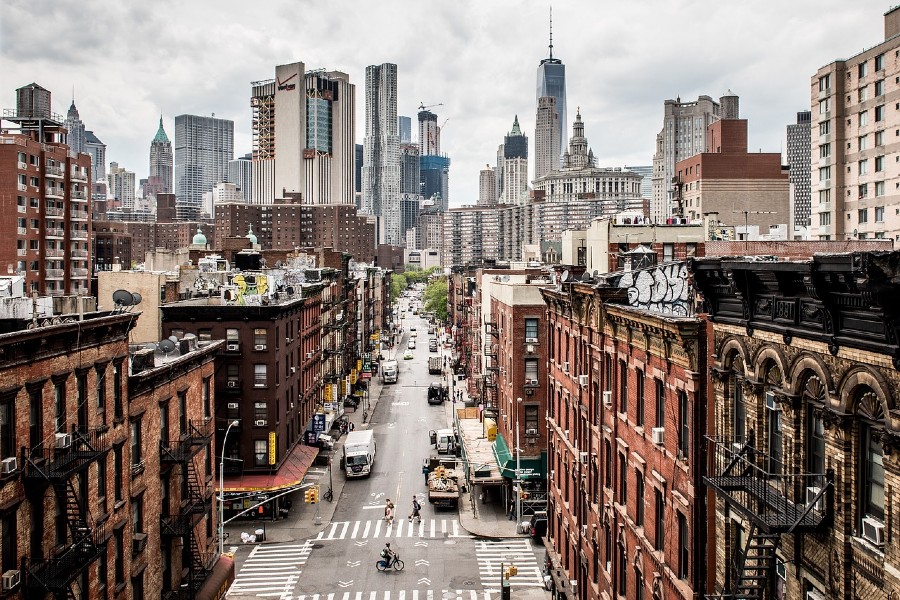
There’s something about hitting the open road that sparks a sense of adventure, especially when you’re armed with a camera.
A photography road trip offers the perfect opportunity to slow down, explore new places, and capture breathtaking moments. Whether you’re a seasoned photographer or someone looking to document your travels, a well-planned road trip can yield an incredible collection of images that tell a story far beyond words.
Road trips have become a quintessential part of American culture, with an increasing number of people embracing them as an ideal way to experience the country’s diverse landscapes. According to a 2021 report by AAA, road trips accounted for 97% of vacation travel in the U.S., a trend that continues to grow as more travelers seek flexibility and personal control over their journeys. But for photography enthusiasts, a road trip is about more than just the journey—it’s about capturing the essence of the places you visit.
From the rolling hills of the Midwest to the rocky coastlines of the Pacific, this guide will take you through some of the best practices for planning a successful photography road trip.
Preparing for the Journey: Essential Gear and Planning
Before you set out on your photography road trip, it’s crucial to prepare not only your camera gear but also your vehicle. You’ll want to make sure your car is ready to handle the miles ahead, especially if you’re traveling to remote locations where amenities are scarce.
One often overlooked accessory is a car cover, which can be especially useful if you’re planning to leave your vehicle parked outdoors while you trek through scenic landscapes. Whether it’s protecting your car from the sun in desert regions or keeping it safe from the elements in mountain areas, a quality car cover can help preserve the condition of your vehicle during long trips.
When it comes to your photography gear, consider the following essentials:
- Camera body and lenses: Depending on the type of photography you enjoy, you may want to bring a variety of lenses, such as a wide-angle for landscapes and a telephoto for capturing distant details.
- Tripod: A sturdy tripod is indispensable for landscape photography, especially when you’re shooting in low-light conditions or aiming for long exposures.
- Filters: Polarizing filters can help reduce glare and enhance colors, while neutral density filters are great for creating dramatic effects with long exposures.
- Extra batteries and memory cards: There’s nothing worse than running out of power or storage just as you’ve framed the perfect shot.
- Portable storage: Bring an external hard drive or cloud storage options to back up your photos along the way.
Mapping Out Your Route
A successful photography road trip requires careful route planning. It’s essential to consider not just the destinations but also the scenic routes that will offer the best opportunities for photography. Websites and apps like Roadtrippers and AllTrails can be invaluable for discovering hidden gems along the way, while Instagram and photography forums can provide inspiration for must-visit locations.
Whether you’re following the Pacific Coast Highway, winding through the Rocky Mountains, or traversing the desert expanses of Arizona, make sure to plan your stops based on lighting conditions. Golden hour—the time just after sunrise and before sunset—provides the best lighting for landscape photography, casting a warm, soft glow that enhances your images.
The Art of Capturing the Journey
As you embark on your photography road trip, remember that the journey itself is just as important as the destinations. Along the way, take the time to document the smaller, more intimate moments that give context to your adventure. Roadside diners, vintage gas stations, and quirky roadside attractions can add character to your photo collection.
For those looking to stay engaged during long stretches of driving, consider incorporating fun games like Connect 4 online into your downtime. This classic game not only provides entertainment but also gives you a chance to relax between stops, ensuring you’re refreshed and focused when it’s time to capture your next shot.
Building a Narrative Through Photos
Great photography is not just about individual shots—it’s about creating a cohesive story that takes the viewer along on your journey. As you shoot, think about the narrative you want to tell. Are you focusing on the contrast between bustling cities and quiet nature? Or perhaps you’re capturing the human element, documenting the people you meet along the way.
Here are a few key themes you might explore:
- Landscape diversity: Capture the variety of environments you travel through, from lush forests to arid deserts.
- Cultural snapshots: Photograph local landmarks, festivals, and street scenes that reflect the culture of each place.
- Human moments: Document candid moments of people interacting with the environment, whether it’s a hiker admiring a view or a local artist at work.
Building this narrative will not only make your photography more engaging but also create a meaningful collection of memories that you can revisit long after the trip is over.
Organizing and Sharing Your Photos
After days or even weeks on the road, you’ll likely end up with thousands of photos. Organizing these images can be daunting, but it’s a crucial step if you want to create lasting memories of your trip. Photo management software like Adobe Lightroom can help you sort, edit, and categorize your photos, making it easier to create cohesive albums or collections.
For many photographers, creating photo books is a great way to compile and showcase their best work. These tangible, high-quality albums offer a more personal way to share your road trip with friends and family than simply posting photos online. Plus, photo books serve as a lasting memento of your journey, something you can look back on for years to come.
Tips for Editing Your Photos
Editing is a vital part of the photography process, helping you enhance the colors, lighting, and composition of your images. However, it’s important to strike a balance between enhancing your photos and maintaining their authenticity. Over-editing can result in images that look overly processed or unnatural.
Here are a few simple tips for editing road trip photos:
- Adjust exposure and contrast: Bring out the details in your photos by adjusting the exposure, shadows, and highlights.
- Use selective color correction: Enhance specific colors, such as the blue of the sky or the green of the trees, while keeping the overall image balanced.
- Crop carefully: A well-cropped image can improve the composition and focus of a photo. Don’t be afraid to cut out distracting elements to highlight the subject of your shot.
Staying Safe on the Road
As you travel through different landscapes and climates, it’s essential to prioritize safety. Ensure that your vehicle is in good working condition, and bring along necessary supplies, such as water, snacks, and a first aid kit. It’s also wise to have a plan in case of emergencies, especially if you’re traveling to remote areas where cell service may be limited.
Be mindful of your surroundings when stopping for photos, particularly in areas with wildlife or unstable terrain. And if you’re camping or staying in rural areas, secure your belongings and make sure you’re prepared for changing weather conditions.
Conclusion: Turning Your Road Trip Into a Visual Journey
A photography road trip offers an incredible opportunity to explore new places, experience different cultures, and capture moments that might otherwise be missed. Whether you’re creating photo books to document your journey or simply sharing snapshots on social media, the key is to approach each day with an open mind and a camera ready to capture whatever comes your way.
So, pack your gear, map out your route, and get ready for an unforgettable adventure. The road ahead is full of stories waiting to be told—and the best part is, you get to be the storyteller.
Photo credit: 1) HWM. 2) Source.
Become a Harlem Insider!
By submitting this form, you are consenting to receive marketing emails from: . You can revoke your consent to receive emails at any time by using the SafeUnsubscribe® link, found at the bottom of every email. Emails are serviced by Constant Contact







